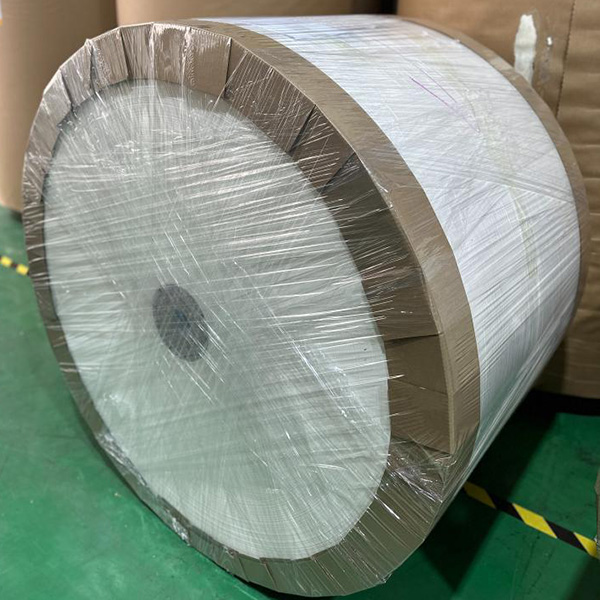Aqueous coated paper represents a significant advancement in paper finishing technology, utilizing water-based coatings to enhance both functional and aesthetic properties. This coating process involves applying a thin layer of water-based polymer solution to paper substrates, which is then cured through evaporation and absorption mechanisms. The resulting surface modification creates a paper product with superior characteristics compared to uncoated alternatives, making it increasingly popular across various industries requiring high-quality printed materials.

Aqueous coatings significantly improve surface reflectivity and color vibrancy. Standard aqueous coatings achieve 85-95 Gloss Units (GU) measured at 60° geometry according to TAPPI T480 standards, compared to uncoated paper which typically measures 5-25 GU. This enhanced gloss provides a 25-40% improvement in color saturation and contrast ratio, resulting in more vibrant and visually striking printed materials.
The polymer-based coating creates a protective barrier that substantially increases durability. Laboratory testing using Sutherland Rub Tester (ASTM D5264) demonstrates that aqueous coated papers withstand 200-400+ rub cycles before showing significant wear, compared to uncoated papers which typically fail after 20-50 rub cycles. This represents a 10-fold improvement in abrasion resistance, making aqueous coated papers ideal for applications requiring frequent handling.
Aqueous coatings provide substantial protection against liquid penetration and moisture damage. Standard testing (TAPPI T441) shows that aqueous coated papers achieve Cobb60 values of 5-15 g/m², indicating minimal water absorption, compared to uncoated papers which typically show Cobb60 values of 20-40 g/m². This moisture resistance translates to improved dimensional stability with less than 0.5% dimensional change under 80% relative humidity conditions.
The sealed surface created by aqueous coating prevents ink absorption into the paper fibers, resulting in sharper image reproduction. Testing demonstrates that aqueous coated surfaces achieve dot gain values of 12-18% compared to uncoated papers which typically show dot gain of 25-35%. This improved ink holdout enables higher screen rulings up to 200-300 lpi for exceptional detail reproduction in high-resolution printing applications.
Aqueous coatings offer significant environmental advantages with VOC (Volatile Organic Compound) emissions below 50 g/L, substantially lower than solvent-based coatings which typically emit 400-600 g/L VOCs. Most aqueous coatings comply with FDA requirements for food contact (21 CFR 176.170) and achieve >90% biodegradability within 28 days under standard testing conditions (OECD 301).
Aqueous coated papers are extensively used in high-end brochures, catalogs, and corporate publications where visual impact and durability are paramount. The enhanced surface characteristics make them ideal for product catalogs requiring accurate color reproduction and business cards that withstand frequent handling without showing wear.
The packaging industry utilizes aqueous coatings for product boxes, cosmetic packaging, and pharmaceutical labels where moisture resistance and scuff protection are critical. The coating provides essential barrier properties while maintaining recyclability, making it suitable for environmentally conscious packaging solutions.
Magazine covers, book jackets, and annual reports benefit from aqueous coating's protective qualities and enhanced visual appeal. The coating protects against fingerprinting and extends the shelf life of publications while providing the high-gloss finish that attracts consumer attention in retail environments.
Aqueous coated papers are FDA-compliant for direct and indirect food contact, making them suitable for frozen Food Packaging, beverage carriers, and fast-food packaging where moisture resistance and food safety are essential requirements.
Annual reports, corporate presentations, and luxury invitations utilize aqueous coated papers to convey quality and professionalism. The enhanced tactile experience and visual appeal communicate premium brand values while providing the durability needed for documents that receive repeated handling.
Proper storage is essential for maintaining the quality of aqueous coated papers. Store in controlled environments with temperatures maintained between 18-24°C (65-75°F) and relative humidity levels between 40-50% RH. Avoid storage near heating vents, direct sunlight, or moisture sources. Stack printed materials flat with adequate support to prevent curling or deformation, particularly important for heavier weight coated stocks.
While aqueous coatings provide excellent scuff resistance, proper handling minimizes surface damage. Use clean, dry hands or cotton gloves when handling coated materials. Avoid sliding printed pieces against each other, as this can create microscopic scratches that diminish gloss. For critical applications, use protective interleaving sheets between coated surfaces during storage and transport.
For routine cleaning of aqueous coated surfaces, use a soft, lint-free cloth slightly dampened with distilled water. Gently wipe in one direction rather than circular motions. For more stubborn smudges, isopropyl alcohol solutions up to 30% concentration can be used, but test on non-critical areas first. Avoid abrasive cleaners, ammonia-based products, or solvents that may damage the coating surface.
For archival applications, store aqueous coated materials in acid-free containers with buffered interleaving. Maintain consistent environmental conditions to prevent coating degradation. UV-protective glass or laminates are recommended for framed aqueous coated prints to prevent fading from light exposure. Regular inspection every 6-12 months helps identify potential issues before they become significant problems.